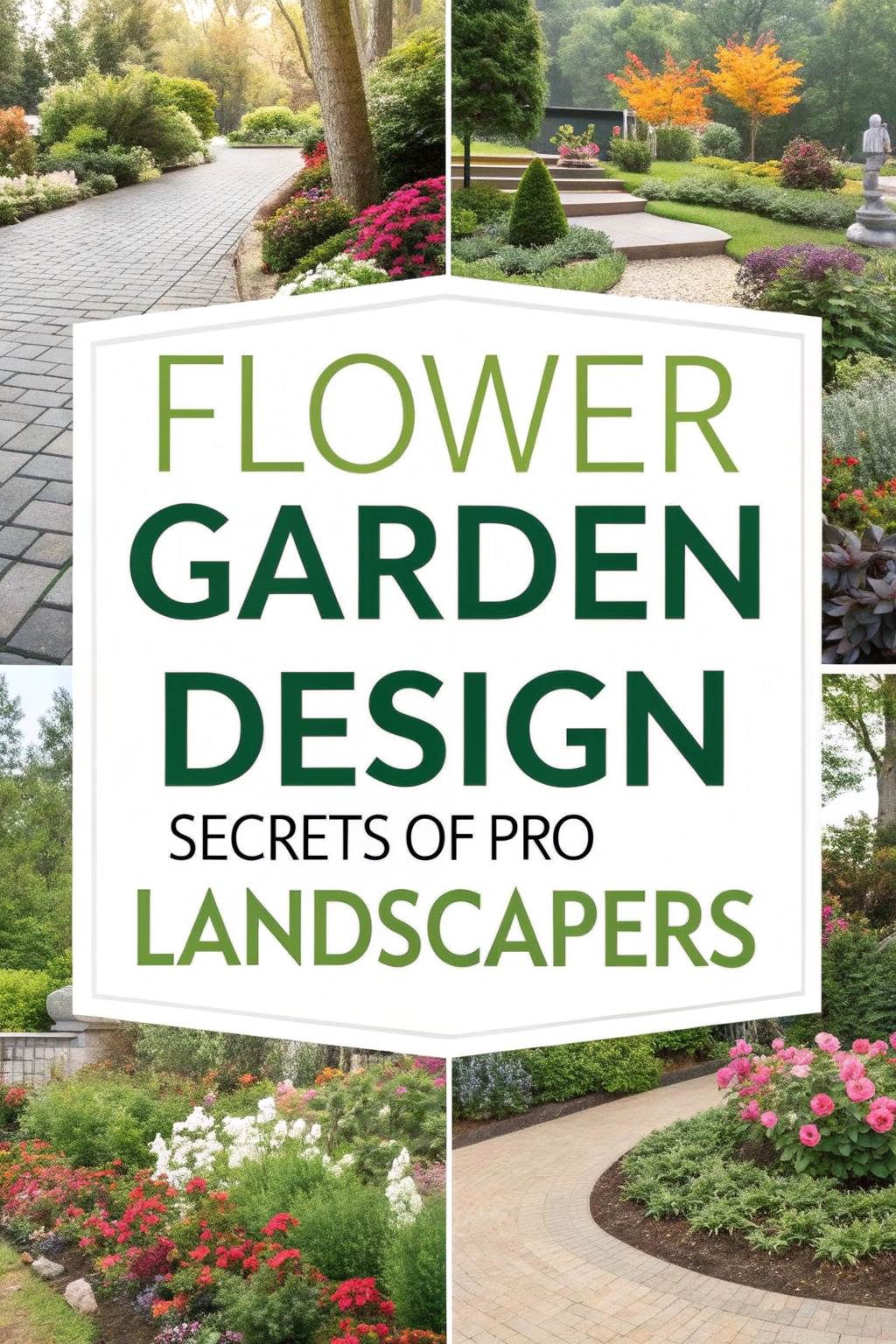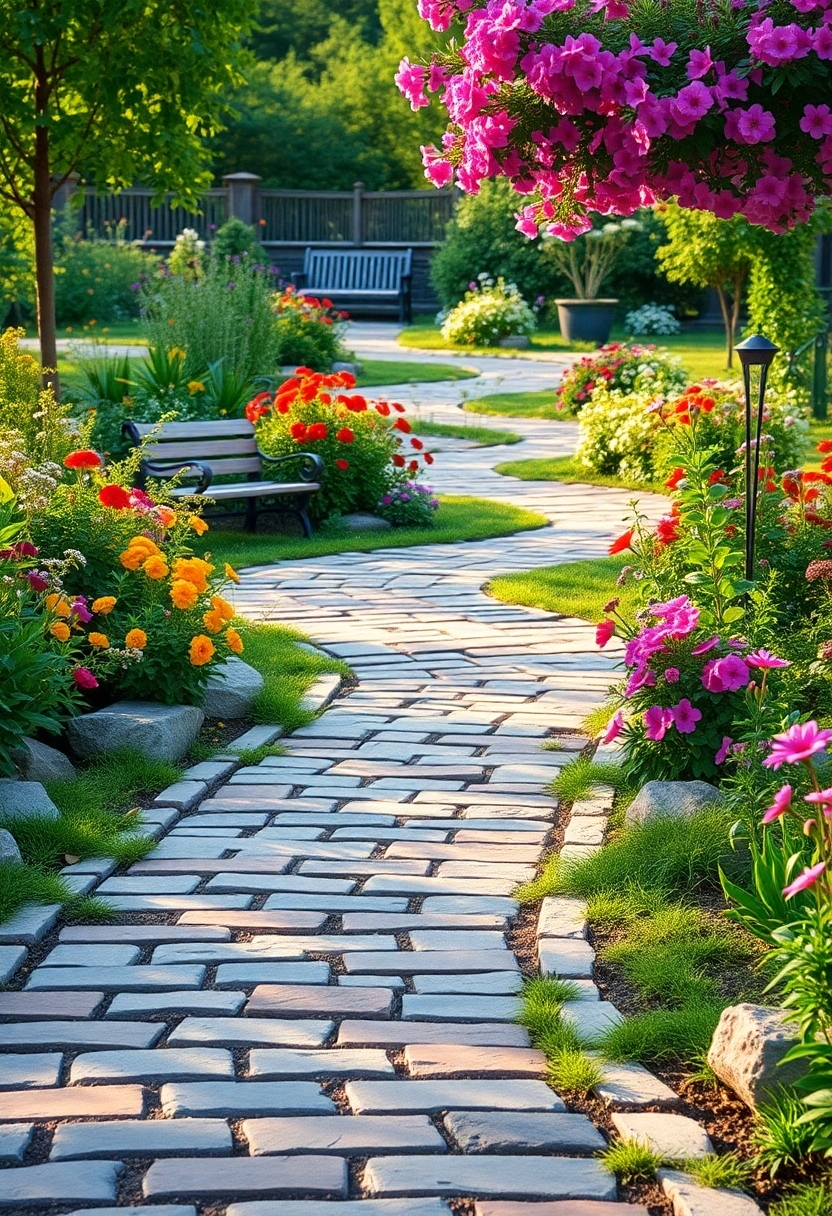

Have you ever seen a garden that looks like a beautiful painting? It’s like a work of art that makes you feel happy and calm. Most professional landscapers say that a good design is the key to making a garden look amazing. A good garden design is not just about picking pretty flowers, it’s about creating a special place that makes you feel happy.
To make a beautiful garden, you need to think about many things, like the colors, shapes, and smells of the plants. By following some simple secrets, you can create your own stunning garden that will make everyone amazed.

Choosing the right color scheme is vital for a beautiful flower garden. Consider the mood and atmosphere you want to create, and select colors that complement each other. Cool colors like blues and purples can create a calming effect, while warm colors like oranges and yellows can add energy and vibrancy to your garden design.

Mixing flowers and foliage creates visually appealing garden arrangements. Combining blooms with varying textures and colors of leaves adds depth and interest to the garden. This blend of flowers and foliage also attracts a diverse range of pollinators and wildlife, creating a thriving ecosystem within the garden space. Strategically mixing these elements enhances overall garden design.

Selecting the perfect garden layout involves considering factors like space, climate, and personal style. A well-designed layout can enhance the beauty and functionality of a flower garden, creating a harmonious balance between different elements, such as paths, beds, and water features, to produce a visually appealing and thriving outdoor space.

Creating a focal point in a flower garden draws the eye to a striking feature, such as a beautiful statue, vibrant bloom, or unique water feature. This central element adds visual interest and creates a sense of balance, guiding the viewer through the garden. It can be a statement piece or a subtle accent.

Balancing texture and pattern is vital in flower garden design. Mixing different textures, such as smooth leaves and fluffy blooms, with various patterns, like stripes and polka dots, creates visual interest. This balance adds depth and dimension to the garden, making it more engaging and beautiful. Careful consideration of texture and pattern guarantees a harmonious and thriving garden.

Utilizing vertical space in flower garden design maximizes area and adds depth. Trellises, arbors, and wall-mounted planters can train vines and climbing plants to grow upwards, while tiered gardens and stepped planters create layered displays, making the most of compact spaces and enhancing visual interest.

Incorporating native plants into your flower garden design enhances biodiversity and attracts local wildlife. Native plants are also low-maintenance and require less watering, as they are adapted to the local climate. This approach creates a unique and thriving ecosystem, showcasing the beauty of regional flora and supporting the environment.

Designing for seasonal interest involves selecting plants that bloom at different times, ensuring a constant display of color and texture throughout the year. This approach creates a dynamic and ever-changing garden, with spring bulbs, summer flowers, autumn foliage, and winter berries each taking center stage in turn.

Ornamental grasses create movement in a flower garden with their delicate plumes and gentle sway in the breeze. Their soft textures and varying heights add depth and visual interest, drawing the eye through the garden. Strategic placement of grasses can guide visitors through the space, creating a sense of flow and dynamism.

Adding decorative elements can elevate your flower garden’s visual appeal. Incorporate items like sundials, sculptures, or bird baths to create a unique ambiance. Consider adding a statement piece, such as a large planter or bench, to draw the eye through the garden. These elements can also serve as a focal point, tying together the overall design.

Using layering in flower garden design adds depth and visual interest. It involves planting a mix of tall, medium, and short flowers, shrubs, and foliage to create a multi-dimensional effect. This technique draws the eye through the garden, creating a sense of movement and exploration, and can be used to frame vistas or conceal unwanted views.

Selecting fragrant flowers and herbs is essential for an enchanting garden. Incorporate blooms like roses, lavender, and jasmine, which emit sweet scents, and herbs like mint, rosemary, and thyme, which add freshness and depth to your outdoor space, creating an inviting ambiance that appeals to the senses.
Read More:

Designing a low-maintenance garden involves choosing drought-tolerant plants, using mulch to retain moisture, and selecting flowering plants that require minimal pruning and care. This approach allows for a beautiful and thriving garden with less water, time, and effort invested. Suitable plants include succulents, groundcovers, and flowering shrubs that are adaptable to various conditions.

Incorporating water features into a flower garden design can add a soothing ambiance and visual interest. Small ponds, fountains, or bird baths can attract wildlife and create a sense of serenity, while also providing a unique backdrop for showcasing floral arrangements and decorative elements like statues or bridges.

To create a sense of privacy in your flower garden, use taller plants and shrubs to block outside views. Consider adding a trellis or arbor to define the space and provide a sense of seclusion. Strategically placed flowers and foliage can also help screen the area from neighboring eyes.

Playing with scale and proportion in flower garden design adds visual interest and harmony. Mixing large and small plants, and combining shrubs with flowering perennials creates a dynamic display. Varying bloom sizes and textures also enhances the overall effect, making the garden more engaging and beautiful to behold.

Choosing the right garden pathway materials is vital for a beautiful and functional flower garden. Options include gravel, stone, wood, and brick, each offering unique textures and durability. Consider factors like maintenance, drainage, and compatibility with surrounding plants and hardscapes to select the perfect material for your garden’s pathways.
You’ll create stunning gardens by applying these 17 secrets. Notably, 75% of gardeners report reduced stress after implementing professional designs. By balancing texture and pattern, you’ll elevate your garden’s visual appeal, making it a serene oasis that attracts wildlife and soothes the senses, ultimately increasing your outdoor living space’s value and aesthetic.
